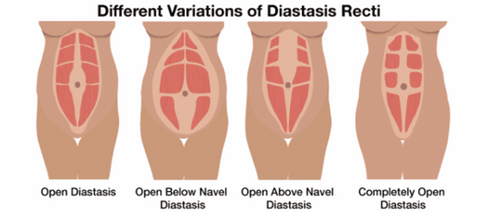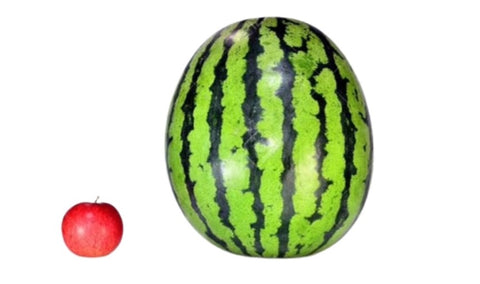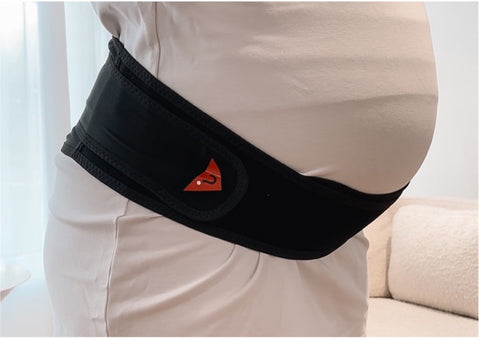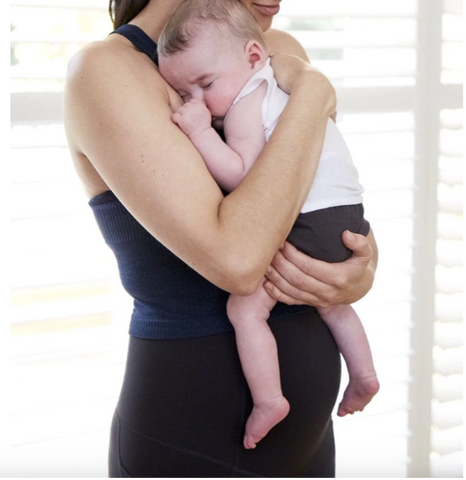6 min read
BY LAUREN BRENTON | ENDORSED MIDWIFE & CHILDBIRTH EDUCATOR
During pregnancy, there are many changes that occur both physically and emotionally to the body. One change that may occur is termed abdominal separation, or its medical name is Diastasis Rectus Abdominis Muscle (DRAM).
Understanding what abdominal separation is, why it occurs, and how we can help manage it, are all vital in helping you throughout pregnancy and postpartum.
1. What is abdominal separation in pregnancy?
Abdominal separation is the complete, or part separation of the muscles of the abdomen which meet at the middle of your stomach (also known as your six pack). During pregnancy, your uterus (womb) grows, and this stretches the muscles in the abdomen to make room for the growing baby.
2. How are the muscles stretched with abdominal separation?
There are different types of abdominal separation which can be seen in the diagram below.

CCRM-O7182-Diastasis-of-recti-abdominal-muscle-in-pregnancy-or-delivery_April-2020 (www.health.qld.gov.au)
The significance of the different types of abdominal separation lies in how they affect the body during and after pregnancy. These variations depend on factors such as the individual's body type, the position of the baby in the womb, and the way the abdominal muscles stretch to accommodate the growing fetus. One type of abdominal separation isn't inherently better than another in terms of recovery; rather, the severity of the type of separation may influence the postpartum healing process.
Most commonly, abdominal separation occurs naturally to ensure the muscles do not tear as the baby grows to accommodate the expanding uterus during pregnancy. The muscles typically come back together over time after childbirth. However, if the separation persists or causes increased back pain during pregnancy, it may warrant further attention and management.
3. What causes abdominal separation in pregnancy?During pregnancy, there are many factors that may impact abdominal separation and the extent of the separation. These include:
- The growing uterus: As the baby and uterus grows it pushes up on the abdominal wall, causing it to stretch or separate. Your uterus can grow up to 500x in volume from its normal size (from the size of an apple to size of a watermelon!)

- Pregnancy hormones: The hormone relaxin during pregnancy softens and relaxes the ligaments and connective tissues to allow them to stretch during pregnancy. However, this may also make you more prone to abdominal separation.
- Weak abdominal muscles: Having weak core muscles can make the abdominal separation worse.
- Certain repeated movements: Certain exercises such as abdominal crunches can make abdominal separation worse instead of improving it. These movements should be avoided during pregnancy.
4. What are the symptoms of abdominal muscle separation in pregnancy?
During pregnancy, you may not notice if you have abdominal separation however some women will experience a variety of additional symptoms.
These may include:- A visible ridge in the middle of their abdomen, particularly when they engage their core muscles.
- Lower back pain
- Pelvic floor symptoms
- Instability in the core muscles
5. How can I manage abdominal separation during pregnancy?
Prevention of abdominal separation is difficult during pregnancy. However, steps can be taken to manage symptoms and promote healing once your baby is born.Some ways that we can manage abdominal separation include:
- The use of abdominal support: TheRY Compression Shorts or Tights or their slimline pregnancy belt provide extra support to the abdominal muscles and help to reduce the pressure on the muscles of the abdomen, pelvis and back.

- Women’s Health Physiotherapist: Prior to commencing any exercises for your abdominal separation, it is essential to see a women’s health physiotherapist to have your situation assessed and tailored to your specific circumstances.
-
Exercises: Gentle exercises that help to strengthen the deep abdominal muscles can reduce abdominal separation. Two of these exercises may include:
- Heel Slides: Lie on your back and have feet flat on the floor and your knees bent. Slowly extend one of your legs out, while remaining contact with your heel on the floor. It is important to breathe normally while completing this exercise. Next bend the knee back up and start on the other side.
- Pelvic tilts: Lie down with your lower back pressing against the floor and your knees bent. Slowly tighten your abdominal muscles and tilt your pelvis forward for a few seconds. Then gently tilt it back. You can repeat this 8-12 times, making sure to breathe normally throughout.
- Avoid any sit ups or movements that require a crunch: This means that when you’re exercising you want to avoid any abdominal crunches. This also includes daily movements like getting in and out of bed. Try to always roll onto your side and use your arms to push you up.
- Avoid lifting heavy objects: this may place strain on your abdominal muscles.
6. How to help abdominal separation after birth?
After birth it is important to allow your abdominal muscles time to heal. About 60% of women will experience abdominal separation following birth. It can take anywhere from 6 weeks to over a year for your body to recover. The following can help:
- Breathing & Posture: Placing focus on your breathing and posture can help. Making sure you are breathing well to fill up your lungs, and in turn allowing your abdominal muscles to relax. Being aware of your posture. Trying to maintain good posture is essential in allowing your abdominal muscles to relax and heal.
- Abdominal Support Garments: It is important to wear your abdominal support garments as soon as you feel comfortable after birth. This will allow the abdominal, pelvis and back muscles the extra support to heal. They can also make you more aware of your posture.

- Women’s health physiotherapist: seeing a women’s health physiotherapist between 1-2 weeks after birth can also help. You will be able to have specific abdominal muscle exercises to help start that healing process. Waiting until 4-8 weeks has been shown to have a reduction in muscle mass by around 20-30%. Therefore, it is essential to start the healing process soon after birth.
7. Summary
Abdominal separation is a common condition during pregnancy and postpartum, that can be managed with some simple changes. By focusing on improving your breathing, posture, supporting your abdominal muscles with reputable compression garments, and seeking specific advice and exercises from a women’s health physiotherapist, you will be better able to support your body both before and after your baby is born.
__________________________
Written by Lauren Brenton
Endorsed Midwife and Founder of One Mama Midwife


